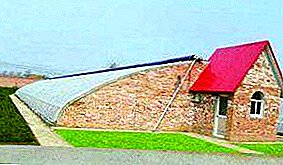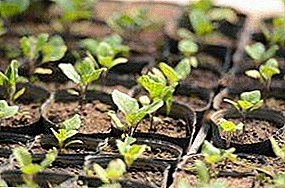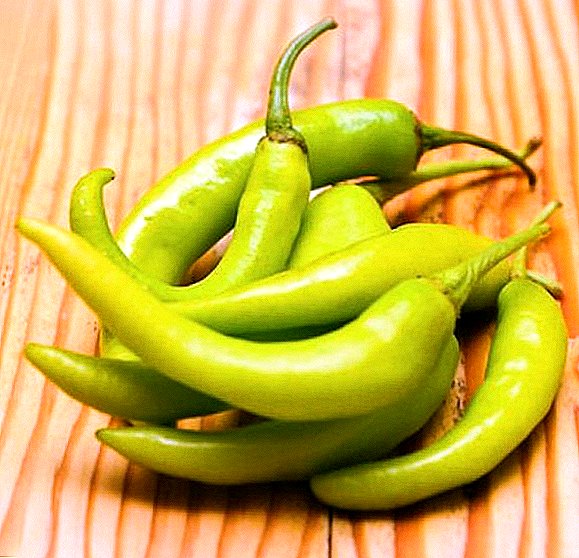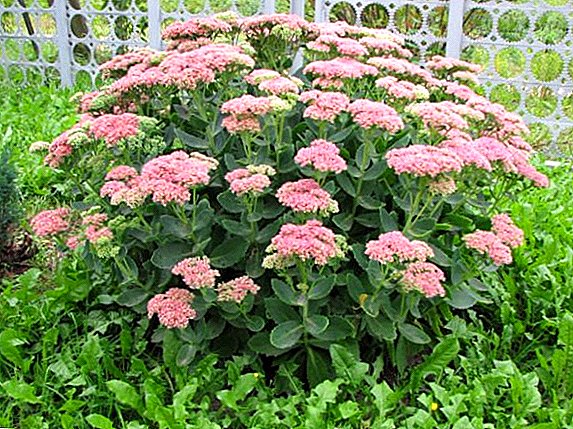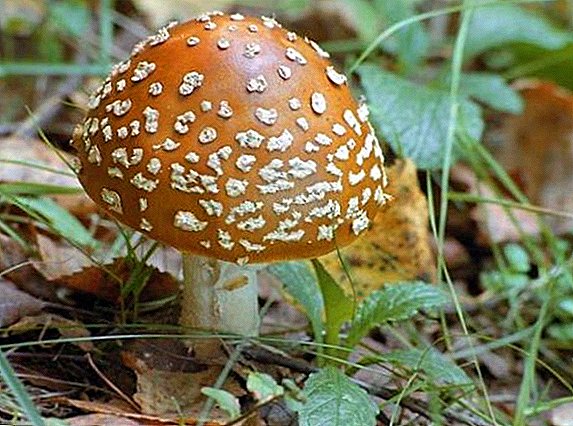 Among the poisonous fungi, perhaps, the toadstools are considered the most toxic. Deadly poisonous and edible species belong to this genus, but the latter are less common. Amanitas have taken their name from the use of the red Amanita in the old days as a means of getting rid of flies. Similar insecticidal abilities are also present in another representative of the genus Amanita (Amanita) - the pantherish mushroom (Amanita pantherina). Let us consider in more detail what kind of mushroom it is.
Among the poisonous fungi, perhaps, the toadstools are considered the most toxic. Deadly poisonous and edible species belong to this genus, but the latter are less common. Amanitas have taken their name from the use of the red Amanita in the old days as a means of getting rid of flies. Similar insecticidal abilities are also present in another representative of the genus Amanita (Amanita) - the pantherish mushroom (Amanita pantherina). Let us consider in more detail what kind of mushroom it is.
What is dangerous mushroom?
Like many mushrooms of this genus, the panther mushroom is poisonous and contains such toxic substances as muscarine, muscaridin, ibotenic acid, bufotenin and other alkaloids. The next group of poisonous compounds is represented by scopolamine and hyoscyamine, characteristic of other poisonous plants (henbane, dope, and others).
In the Panthera mushroom, the concentration of these poisonous and hallucinogenic compounds is higher than that of the red and, accordingly, the probability of a lethal outcome when it is used is also higher. It should be noted that fatal cases of healthy adults with poisoning by this fungus are quite rare, but it can be very dangerous for young children.
However, despite the toxic compounds, alternative medicine uses this fungus to normalize metabolism. This contributes to the bioactive substance choline, which is included in its composition. But mostly traditional medicine prefers to use less toxic red amanita, and it is effectively used against insects. 
Did you know? The Panther fly agaric is an entheogen and is used by some peoples in shamanic practices to evoke hallucinations. According to the legends, these mushrooms were given to the soldiers before the fight, as their use in the first two hours causes aggression and fearlessness, increasing muscle strength. After this effect, retribution was observed — hallucinations, and in some cases loss of consciousness, coma, and even death.
What a poisonous fly agaric looks like: detailed description
This is a fungus. In young fungi, the fruit body is protected by a shell, which is called the veil. Her remains are deposited on the cap with removable flakes, in the form of a ring and a collar on the leg.
Hat
The smooth cap of this mushroom is usually brownish in color, but may have olive or gray tones. It is covered with small white flakes that can be easily separated. Sometimes flakes hang around the edges of the cap - the remains of a bedspread.  At first, the cap has a hemispherical shape, which with time straightens and acquires an even appearance, a thin ribbed edge becomes visible. Its width is from 4 to 12 cm.
At first, the cap has a hemispherical shape, which with time straightens and acquires an even appearance, a thin ribbed edge becomes visible. Its width is from 4 to 12 cm.
Check out the useful properties of the mushroom.
Pulp
The flesh is white, does not change its color in the air when breaking off a piece. It is quite fragile and watery, has an unpleasant smell. Some people find this smell similar to that of radish. It tastes sweetish, but this fungus should not even be tried.
Records
The plates under the cap of white color are often located, expand to the edge of the fungus. Old fungi may have dark spots on them. The plates do not adjoin the mushroom stem. 
Leg
It grows from 4 to 12 cm in height, and its diameter is about 1-1.5 cm. It narrows in the upper part, and at the bottom has a tuber-like thickening with warts in a circle.
To protect yourself from severe poisoning, we recommend reading about how to distinguish edible mushrooms from false ones, as well as which mushrooms are poisonous.
The ring surrounding the leg is thin and striped, but it is not always noticeable, as it disappears with time. But the remains of the coverlet (Volvo) are noticeable at the base of the leg. A rather thick volvo with a collar girds a thickened bottom of the leg and is the main sign of this mushroom.
Spore powder and spores
The spore powder is white. The spores themselves are in the form of an ellipse and are about 11x7.5 microns in size. 
Similar species
Next to the Panther Mushroom can grow mushrooms similar to it. These are representatives of the same genus with him - conditionally edible gray-pink Amanita and inedible, but not toxic thick amanita.
Did you know? The most dangerous and poisonous fungus on earth - the pale grebe, also belongs to the genus Amanita. Contains deadly poisons that infect the liver and may not manifest themselves immediately. The first symptoms of poisoning can appear only two days after the intake of toxic substances in the body.
Edible mushroom gray-pink
The gray-pink amanita is also known by other names - pink, red and pearl-colored amanita. It grows in coniferous, deciduous and mixed forests, most often near pines or birches from spring to late autumn. It grows both alone and in groups.  Hat reaches a length of 6 to 20 cm. In young specimens, it initially has an egg-shaped shape, but as it grows it becomes flatter without a pronounced tubercle. The color of the skin varies from a grayish-pink to red-brown tone, it is a little sticky and shiny.
Hat reaches a length of 6 to 20 cm. In young specimens, it initially has an egg-shaped shape, but as it grows it becomes flatter without a pronounced tubercle. The color of the skin varies from a grayish-pink to red-brown tone, it is a little sticky and shiny.
Pulp white, fleshy, odorless, with a mild flavor. On the faults darkens over time and from a pale tone becomes a dark pink color.
Without health risks, you can eat mushrooms such as champignons, boletus, russula, volushki, chanterelles, boletus, greenfinchs, aspen mushrooms, black and aspen mushrooms, white podgruzdki, edible morels, parsley, ceps, and honey agaric.
Records white, wide, frequent, and when pressed on them darken and become reddish, like other flesh.
Leg 1.5-3 cm in diameter, and 3-6 cm in height, can sometimes grow up to 20 cm, pale or pale pink. Originally a solid structure, but over time it becomes hollow. At the base there is a characteristic thickening that is often affected by insects.  The remains of the bedspread form a ring, which is initially white, but eventually turns pink. On top of these remnants of the curtain are observed grooves. Volvo is slightly pronounced and has the form of a single or double ring at the base of the leg. On a hat there are flakes in the form of membranous fragments of brownish or dirty-pink tones.
The remains of the bedspread form a ring, which is initially white, but eventually turns pink. On top of these remnants of the curtain are observed grooves. Volvo is slightly pronounced and has the form of a single or double ring at the base of the leg. On a hat there are flakes in the form of membranous fragments of brownish or dirty-pink tones.
Controversy amyloid, oval, size 8.5 × 6.5 microns.
Inedible thick fly agaric
This mushroom grows next to the coniferous trees, but can be found in deciduous.
It will be useful for you to read about how to check the mushrooms for edibility by popular methods.Hat this fungus reaches from 6 to 15 cm and has a brownish or grayish color, more dense in the center. It is covered with off-white scales, which are easily removed. The spherical cap reveals itself over time, as in the panther mushroom, but its edge is of a fibrous, not ribbed appearance.
Pulp white and odorless. Sometimes young mushrooms have a slight smell of anise, while old ones have a rare odor.  Records white, frequent, growing to the mushroom leg. Between each two plates there is a smaller plate.
Records white, frequent, growing to the mushroom leg. Between each two plates there is a smaller plate.
Leg it has a larger one, 5–15 cm high and 1.5–3 cm wide, of white or light gray color. In the upper part there is a ring, above which there is a longitudinal lining, coming from the plates. Under the ring surface is uneven, scaly. Below there is a thickening, not always explicitly expressed, with belts from the rest of the cover.
Spore powder white, the spores themselves are oval 7.5-11 × 5.5-8 microns.
Where panther amanitas grow
Growth sites of the panther mushroom are in the temperate continental zone of the Northern Hemisphere. This poisonous fungus is predominantly located in forests and forest plantations consisting of coniferous trees, usually among pines.
We advise you to get acquainted with the peculiarities of pickling, salting and freezing of mushrooms.In the deciduous forests of such a mushroom can be found less frequently. He likes alkaline soil. The life cycle lasts from July until the end of September. It coexists well with other mushrooms, not only poisonous, but also edible.

The first signs and symptoms of poisoning
Young copies of this mushroom can be taken as edible. Therefore, these poisonous mushrooms can accidentally get into the food. The first signs of poisoning appear within two hours, sometimes within twenty minutes.
Symptoms of poisoning are as follows:
- the temperature rises;
- there is a feeling of dryness of the mucous membrane;
- nausea and vomiting, as well as diarrhea;
- difficulty swallowing;
- the appearance of tachycardia;
- there is an expansion of the pupils;
- with severe poisoning, hallucinations, euphoric state, increased psychomotor function, involuntary contractions of muscle fibers appear.
Important! If the above signs of poisoning appear, you should immediately call an ambulance and report that the cause of the poisoning is mushrooms. This is necessary in order for the doctor to know which antidote to apply. This is usually atropine.

How to give first aid
It is very important for the surrounding relatives, friends and acquaintances to be able to provide first aid to the patient, who was poisoned by amanita, before the arrival of an ambulance.
To do this, take the following steps:
- do a gastric lavage. For this procedure, the patient is given a weak solution of manganese or soda of about 500-700 ml;
- if there is no vomiting, then try to induce a gag reflex - tap a teaspoon on the upper part of the throat. This procedure contributes to the removal of poison from the body, which did not have time to enter the blood;
- to eliminate the dehydration process, give the victim salted water, milk with honey, you can also strong non-hot coffee or tea;
- in the presence of sorbents, be sure to give them to the patient. So, activated carbon in this case is taken at the rate of 1 tablet for every 10 kg of the victim's weight. If the weight is about 60 kg, then you will need, respectively, 6 tablets. This will help to neutralize the intoxication of the body;
- poisoning by this fungus has a negative effect on the heart, so the patient is shown bed rest and rest.
Video: what to do when mushroom poisoning
Important! Untimely or improper assistance for poisoning with a panther mushroom can lead to encephalopathy or toxic hepatitis.
To avoid poisoning, try not to eat unfamiliar mushrooms, especially if you do not understand them. The panther fly agaric is a highly poisonous mushroom and a hallucinogen; it can be used only as a means against insects.
Traditional medicine almost does not use it, preferring the red mushroom. Although cases of fatal poisoning are rare, mushroom pickers should avoid it.



